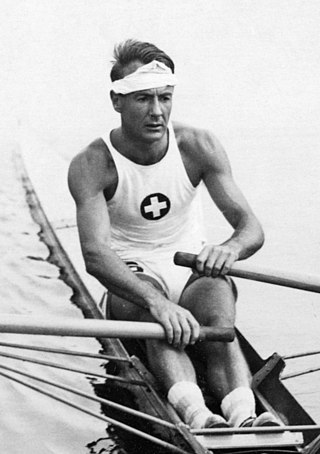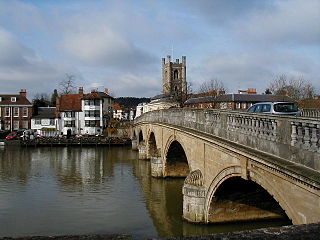
Rowing has been part of the Summer Olympics since its debut in the 1900 Games. Rowing was on the program at the 1896 Summer Olympics but was cancelled due to bad weather. Only men were allowed to compete until the women's events were introduced at the 1976 Summer Olympics in Montreal which gave national federations the incentive to support women's events and catalysed growth in women's rowing. Lightweight rowing events were introduced to the games in 1996. Qualifying for the rowing events is under the jurisdiction of the World Rowing Federation. World Rowing predates the modern Olympics and was the first international sport federation to join the modern Olympic movement.

Canada competed at the 1912 Summer Olympics in Stockholm, Sweden. 37 competitors, all men, took part in 30 events in 7 sports.

The men's single sculls was one of four rowing events on the Rowing at the 1908 Summer Olympics programme. Nations could enter up to 2 boats. Nine rowers from six nations competed. The host nation, Great Britain, earned the top two spots with Harry Blackstaffe taking gold and Alexander McCulloch silver. It was the first victory in the event for Great Britain, which had taken bronze in 1900. The two bronze medals went to semifinalists Bernhard von Gaza of Germany and Károly Levitzky of Hungary, both nations making their debut in the event.

The men's eight was a rowing event held as part of the rowing programme at the 1904 Summer Olympics. It was the second time the event was held at the Olympics. The competition was held on Saturday, July 30, 1904. Two crews, one from the United States and one from Canada, competed. The American team won, successfully defending their Olympic title from 1900.

The men's coxed four was a rowing event held as part of the Rowing at the 1912 Summer Olympics programme. It was the second appearance of the event, which had been held at the 1900 Summer Olympics but had been replaced by coxless four at the 1904 and 1908 Games. The standard coxed four event allowed for outriggers, while another event was held in 1912 for boats with inriggers. The competition was held from 17 to 19 July 1912.

Frank Bartholomew Greer was an American rower who competed in the 1904 Summer Olympics.

The men's single sculls event was part of the rowing programme at the 1920 Summer Olympics. The competition, the fifth appearance of the event, was held from 27 to 29 August 1920. Ten rowers, each from a different nation, competed. The event was won by John B. Kelly Sr. of the United States, the nation's second victory in the event. It was the first of Kelly's three Olympic gold medals; he would also win in the double sculls about an hour later as well as in the 1924 double sculls. In the final, Kelly defeated Great Britain's Jack Beresford in "of the greatest sculling races ever contested." Beresford led most of the way, with Kelly passing him late and winning by one second—a very close race in single sculls. The final held particular significance to Kelly, who had only decided to participate in the Olympics after being excluded from the 1920 Diamond Challenge Sculls; Kelly had wanted "to get a crack at the man who wins the diamond sculls"—which had turned out to be Beresford.

The men's coxed four event was part of the rowing programme at the 1920 Summer Olympics. The competition was held on 28 and 29 August 1920. It was the third appearance of the event, which had previously been held inaugural rowing competitions in 1900 as well as in 1912. Eight boats, each from a different nation, competed. The medals all went to nations that had not won a medal in the men's coxed four previously: Switzerland and the United States took gold and silver, respectively, in their debuts in the event; Norway took bronze.

The men's single sculls event was part of the rowing programme at the 1924 Summer Olympics. The competition, the sixth appearance of the event, was held from 14 to 17 July 1924 on the river Seine. There were 8 competitors from 8 nations, with each nation limited to a single boat. The event was won by Jack Beresford of Great Britain, the nation's third victory in the event. Beresford, who had lost a tightly contested final in 1920 to John B. Kelly Sr., became the first man to win multiple medals in the single sculls though it required him having to compete in the repechage to even secure a place in the final. Great Britain's podium streak in the event extended to four Games; the nation had won a medal each of the five times it appeared, missing only 1904.

The men's coxed pair event was part of the rowing programme at the 1924 Summer Olympics. The competition, the third appearance of the event, was held from 14 to 17 July 1924 on the river Seine. Five teams, each from a different nation, competed, for a total of 15 rowers and coxswains. The event was won by Switzerland, with rowers Édouard Candeveau and Alfred Felber and coxswain Émile Lachapelle. The two Swiss rowers had earned bronze in 1920 with a different cox. Defending champion Italian rowers Ercole Olgeni and Giovanni Scatturin took silver, this time with Gino Sopracordevole as their cox. Candeveau, Felber, Olgeni, and Scatturin were the first four men with multiple medals in the event. The United States' debut in the event netted a bronze medal for rowers Leon Butler and Harold Wilson and cox Edward Jennings.

The men's single sculls event was part of the rowing programme at the 1928 Summer Olympics. It was one of seven rowing events for men and was the seventh appearance of the event, which had been on the programme for every Games since rowing was added in 1900. There were 15 competitors, each from a different nation. The event was won by Bobby Pearce of Australia, the nation's first medal in the event. Silver went to Ken Myers of the United States, extending that nation's podium streak to three Games. David Collet of Great Britain took bronze; that nation had also earned a medal each time it appeared and had a five-Games podium streak.

The men's coxed four event was part of the rowing programme at the 1928 Summer Olympics. It was one of seven rowing events for men and was the fifth appearance of the event. It was held from 3 to 10 August. There were 11 boats from 11 nations, with each nation limited to a single boat in the event. The event was won by Italy, the nation's first medal in the men's coxed four. The Italian team dethroned two-time reigning champion Switzerland, beating the Swiss crew in both the semifinals and the final. Switzerland's silver medal brought its podium streak in the event to three Games; the United States had its two-Games medal streak end. Poland took bronze, its first medal in the event.

The men's coxed pair competition at the 1932 Summer Olympics in Los Angeles took place are at Long Beach Marine Stadium on 13 August. Competition consisted of a single round. There were 4 boats from 4 nations, with each nation limited to a single boat in the event. The event was won by the United States, its first victory in the event. Coxswain Edward Jennings had also been on the bronze medal team in 1924, making him the fifth man with multiple medals in the coxed pair. The American rowers were Charles Kieffer and Joseph Schauers. Silver went to Poland, in its coxed pair debut. France earned bronze.

The men's single sculls competition at the 1952 Summer Olympics took place at Meilahti, Helsinki, Finland. The event was held from 20 to 23 July. There were 18 competitors from 18 nations, with each nation limited to a single boat in the event. The event was won by Yuriy Tyukalov of the Soviet Union, in the nation's debut at the Games. Defending champion Mervyn Wood took silver, the fourth medal in five Games for Australia. Teodor Kocerka's bronze was Poland's first medal in the men's single sculls.
The men's single sculls competition at the 1936 Summer Olympics took place at Grünau Regatta Course, near Berlin, Germany. The event was held from 11 to 14 August. There were 20 competitors from 20 nations, with each nation limited to a single boat in the event. The event was won by Gustav Schäfer of Germany, the nation's first victory in the event and first medal of any colour in the men's single sculls since 1908. Josef Hasenöhrl took silver, Austria's first medal in the event. Dan Barrow earned bronze, extending the United States' podium streak in the event to five Games; the Americans had taken a medal in each of the six times they competed in the event.

The men's single sculls competition at the 1948 Summer Olympics took place at Henley-on-Thames, London, United Kingdom. The event was held from 5 to 9 August. There were 14 competitors from 14 nations, with each nation limited to a single boat in the event. The event was won by Mervyn Wood of Australia, the nation's third victory in four Games. Eduardo Risso's silver was Uruguay's second medal in the event, after a bronze in 1932. Italy received its first men's single sculls medal with Romolo Catasta's bronze. The United States had its five-Games podium streak in the event ended, as John B. Kelly Jr. lost his semifinal by 0.4 seconds and did not advance to the final.

The men's coxed four competition at the 1936 Summer Olympics in Berlin took place are at Grünau on the Langer See. It was held from 12 to 14 August. There were 16 boats from 16 nations, with each nation limited to a single boat in the event. The event was won by Germany, the second time the nation had won two consecutive gold medals in the men's coxed four. Germany's four gold medals overall was the most any nation won in the event before it was discontinued; four nations won two. Switzerland, which had won three straight medals in the 1920s before not competing in 1932, returned to the podium with a silver medal. Bronze went to France, the nation's first medal in the event since 1924. Both Italy and Poland had two-Games medal streaks broken.

The men's coxed pair competition at the 1948 Summer Olympics in London took place at Henley-on-Thames, London. It was held from 5 to 9 August. There were 9 boats from 9 nations, with each nation limited to a single boat in the event. The event was won by the Danish team, rowers Finn Pedersen and Tage Henriksen and coxswain Carl-Ebbe Andersen; it was the first medal in the men's coxed pair for Denmark. Italy won its second consecutive silver medal, with Giovanni Steffè, Aldo Tarlao, and cox Alberto Radi. Hungary also earned its first medal in the event, a bronze for Antal Szendey, Béla Zsitnik, and cox Róbert Zimonyi. The French three-Games pre-war podium streak ended.

The men's coxed four competition at the 1948 Summer Olympics in London took place at Henley-on-Thames, London. It was held from 5 to 9 August. There were 16 boats from 16 nations, with each nation limited to a single boat in the event. The event was won by the United States, the nation's first victory in the men's coxed four. Switzerland earned silver, the nation's fifth medal in the event in six Games. Denmark took its first medal in the men's coxed four since 1912, with bronze.

The men's coxed four competition at the 1992 Summer Olympics took place at took place at Lake of Banyoles, Spain. It was held from 27 July to 1 August. There were 12 boats from 12 nations, with each nation limited to a single boat in the event. The event was won by Romania, the nation's first victory in the event; the Romanian team had taken silver in 1988. Germany, recently re-united, took silver in 1992; East Germany had won gold in 1988. Two men returned from the 1988 podium to medal again in 1992: Dimitrie Popescu of Romania and Hendrik Reiher of the former East German team. They were the eighth and ninth men to earn multiple medals in the event; due to the removal of the men's coxed four from the programme, they would be the last. Bronze went to Poland, the nation's fourth bronze medal in the coxed four.

















